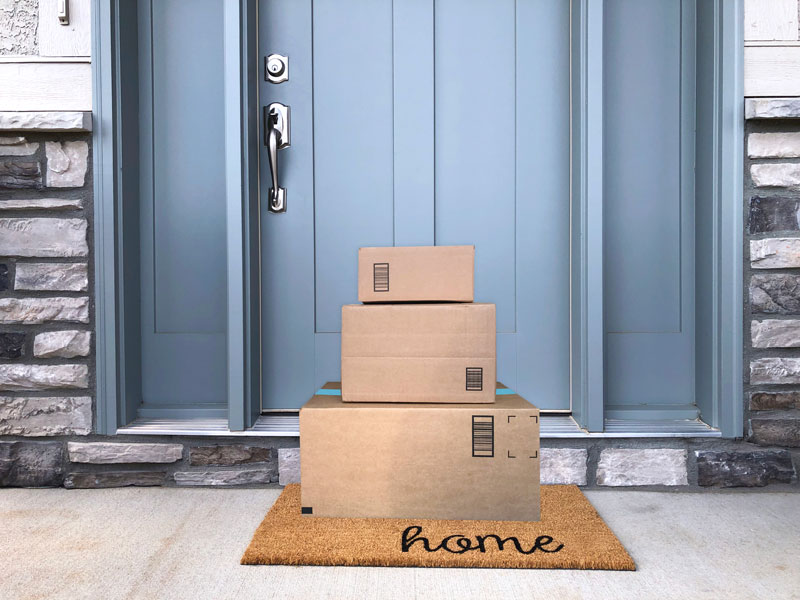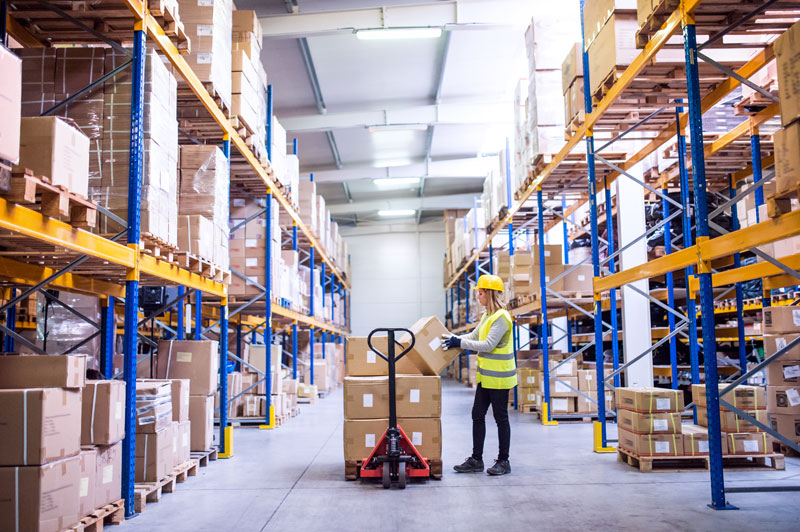4 Ways COVID-19 Has Changed eCommerce Fulfillment
The past several weeks have been a roller coaster ride for people and businesses everywhere, and eCommerce fulfillment is no exception.
While some industries are facing declines due to COVID-19, others are experiencing significant growth.
According to recent data, eCommerce spending rose sharply the week of 4/14 – 4/20. Sales were up about 25% for that time period, surpassing the record of 18% from the week before. Since late February, eCommerce spending is up nearly 50%. With the exception of a few categories like business supplies, spending is way up across the board.
It’s clear that consumers are buying more online at the moment – and eCommerce order fulfillment centers are feeling the effects and adapting accordingly.
Here are 4 ways eCommerce fulfillment has been impacted in the wake of COVID-19:
#1 – Online Shopping Behavior
First, a bit more about recent consumer buying behavior.
With countries and U.S. states facing shutdowns of different scales, and nonessential businesses being ordered to close for weeks, consumers are spending more time at home and buying more goods online in order to avoid venturing out.
Some of the categories seeing the biggest gains recently include:
- Automotive parts and tires
- Electronics
- Shoes and apparel
- Health and beauty
- Sports and fitness
- Toys and games

Some Americans who received their government stimulus check are using the money to pay off debt, donate to a charitable cause, or save for future investments.
But others are choosing to put it to use now, which is another driver behind the jump in online spending in recent weeks.
Some other notable trends in current buying behavior:
More consumers are buying from new online retailers. Whether it’s to support more local or regional businesses or to take advantage of product availability or faster/cheaper delivery, more people are trying out different stores and retailers for the first time.
More consumers are stocking up. Whether it’s groceries or other household staples, lots of consumers are saying more is better – buying in a bigger volume when shopping online. In fact, many eCommerce sites like Walmart Grocery have capped the order quantity on several items, especially on items such as bottled water, disinfecting wipes, and paper products like toilet paper and paper towels.
This buy-in-bulk behavior is also driving companies to stock up their warehouses as much as they can to keep satisfying product demand.
#2 – Supply Chain
Supply chain disruption is a big concern at this moment for retailers and their eCommerce fulfillment partners. With many products and raw materials coming out of China, and many Chinese factories just reopening up now after being closed for months, some supply chains are feeling the impact.
Luckily for PFC, our customers’ supply chains have remained fairly constant and our business operations have been consistent with trends seen elsewhere. Due to daily shipping carrier fluctuations, customers may experience minor delays due to package volume and air cargo space.
#3 – Warehouse Operations

eCommerce order fulfillment centers have put many new protocols in place to make sure their warehouse operations stay up and running. This is critical because even just one case of a worker testing positive for the virus can force a warehouse and all its fulfillment operations to stop until proper sanitizing is done, and the facility is deemed to be safe to re-open.
To maintain a healthy work environment in our warehouses and offices, PFC is following several safety guidelines for our teams and staff. This includes the practice of social distancing and the use of latex gloves by our operations staff as well as body temperature checks for operations staff prior to entering a PFC facility. Equipment and high-traffic areas throughout our warehouses are also being cleaned and monitored on a regular basis.
#4 – Delivery
Most modes of shipping and delivery have been affected as the world tries to adapt to these unusual times. The movement of international and domestic goods by rail, boat and air has been impacted as well as the movement of packages on the ground by the big three carriers.
UPS and FedEx are experiencing delays in domestic deliveries and transit times. FedEx is also suspending their money-back guarantee and are waiving signature-on-delivery service in most countries. UPS is also waiving signature-on-delivery service in some countries.
The U.S. Postal Service (USPS) is also making changes – temporarily suspending international mail acceptance to select countries due to service impacts related to COVID-19. For the complete list of the USPS internal service disruptions, click here.
Online players like Amazon are also making adjustments to their delivery policies for the US, UK, and EU markets. Last month, they announced that sellers using Fulfillment By Amazon (FBA) will be restricted from utilizing Amazon for new shipments until April 5th – although that deadline has been extended and the policy is still in effect until further notice.
For businesses affected by this, PFC can help you continue to utilize Amazon as a sales channel. Switching to FBM (Fulfillment By Merchant) model will take some of the load off of Amazon since merchants are then responsible for fulfilling and shipping their products. PFC can easily integrate into Amazon FBM and fulfill those orders and save you operational costs while maintaining Amazon as a sales channel.
Stay Updated

It’s impossible to predict what the future holds for eCommerce and what our new normal might look like. The current situation is evolving daily, as individual countries and U.S. states announce their plans for re-opening business.
The best course of action you can take is to remain alert for the safety and well-being of your organization, colleagues, and loved ones.
Also, continue to monitor the helpful links below for the latest updates from industry experts and eCommerce fulfillment partners:
Optimize for More Online Sales
As online sales continue to climb, it’s important for retailers to have their websites running smoothly. If you have any customer pain points like a slow-loading site, confusing site search, lack of product discoverability, or a poor checkout experience, make it a priority to resolve them.
The top features of an effective, engaging eCommerce site are:
- Optimized for mobile (responsive site)
- Easy to navigate
- Product search functionality
- Informative, engaging product copy that drives sales
- Quality images of your products
- Seamless shopping cart/checkout experience
Keep Communicating
In times like these, it’s important to keep an open dialogue with all the players involved in your ecommerce fulfillment operations – customers, workers, vendors, carriers – everyone. Send out regular communications and increase or lower the frequency as needed from week to week. Make sure your contacts know how they can reach you with any questions or concerns (email, phone, website, customer portal, etc.)
Sources:
Understanding the COVID-19 Effect on Online Shopping Behavior
COVID-19 Weekly Pulse Report for Ecommerce

